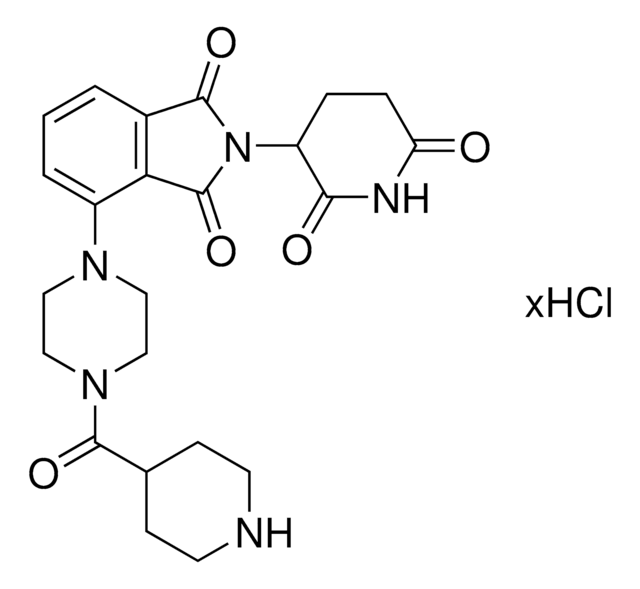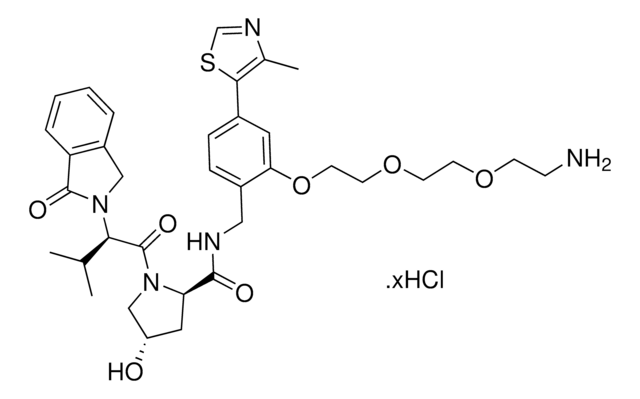917303
C5 Lenalidomide-C6-PEG1-C3-PEG1-Butyl NH2 hydrochloride
≥95%
別名:
6-((5-((6-Aminohexyl)oxy)pentyl)oxy)-N-(2-(2,6-dioxopiperidin-3-yl)-1-oxoisoindolin-5-yl)hexanamide hydrochloride, C5 Lenalidomide conjugate, Crosslinker−E3 Ligase ligand conjugate, Protein degrader building block for PROTAC® research, Template for synthesis of targeted protein degrader
About This Item
おすすめの製品
ligand
C5 Lenalidomide
品質水準
アッセイ
≥95%
形状
powder or crystals
反応適合性
reactivity: carboxyl reactive
reagent type: ligand-linker conjugate
官能基
amine
保管温度
2-8°C
SMILES記法
O=C1N(C2CCC(NC2=O)=O)CC3=CC(NC(CCCCCOCCCCCOCCCCCCN)=O)=CC=C31.Cl
関連するカテゴリー
アプリケーション
その他情報
Portal: Building PROTAC® Degraders for Targeted Protein Degradation
Targeted Protein Degradation by Small Molecules
Small-Molecule PROTACS: New Approaches to Protein Degradation
Targeted Protein Degradation: from Chemical Biology to Drug Discovery
法的情報
関連製品
保管分類コード
11 - Combustible Solids
WGK
WGK 3
引火点(°F)
Not applicable
引火点(℃)
Not applicable
適用法令
試験研究用途を考慮した関連法令を主に挙げております。化学物質以外については、一部の情報のみ提供しています。 製品を安全かつ合法的に使用することは、使用者の義務です。最新情報により修正される場合があります。WEBの反映には時間を要することがあるため、適宜SDSをご参照ください。
Jan Code
917303-BULK:
917303-50MG:
917303-VAR:
最新バージョンのいずれかを選択してください:
ライフサイエンス、有機合成、材料科学、クロマトグラフィー、分析など、あらゆる分野の研究に経験のあるメンバーがおります。.
製品に関するお問い合わせはこちら(テクニカルサービス)








